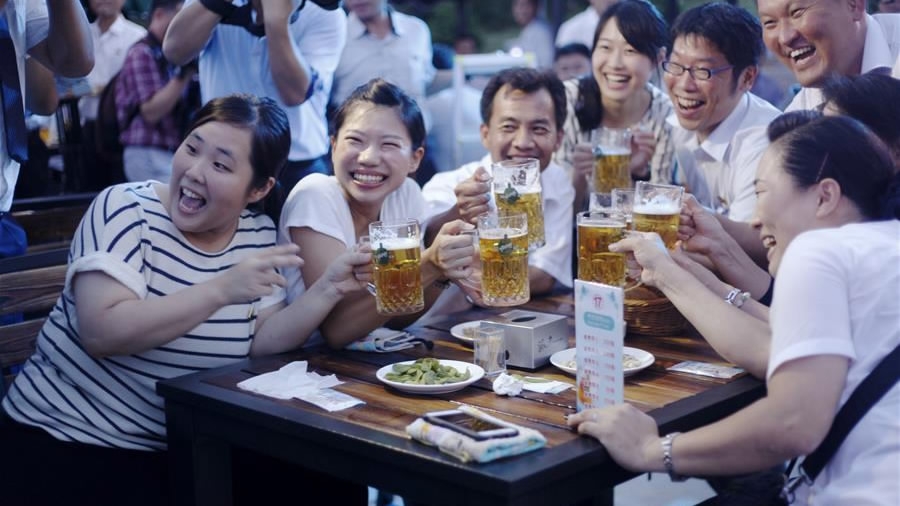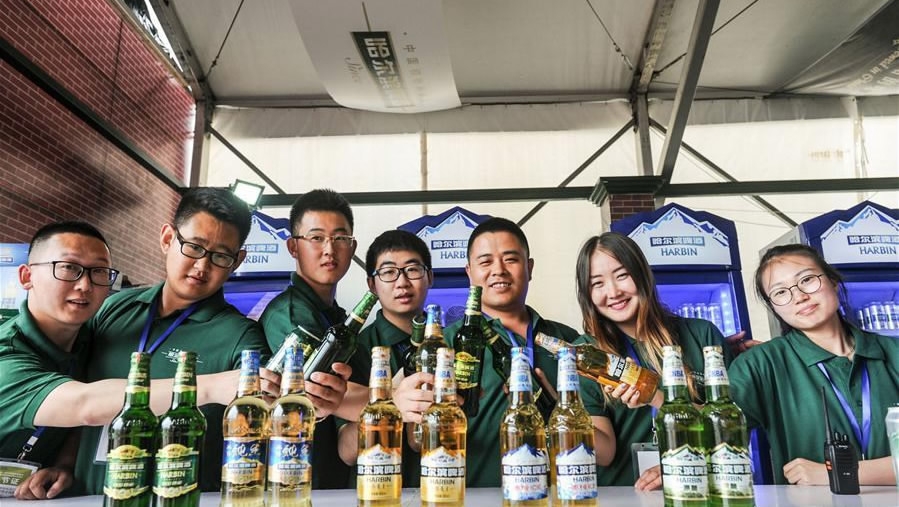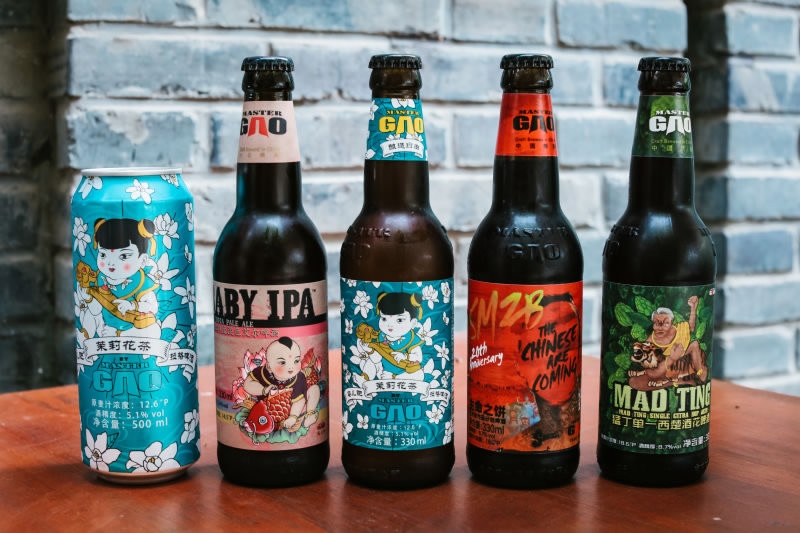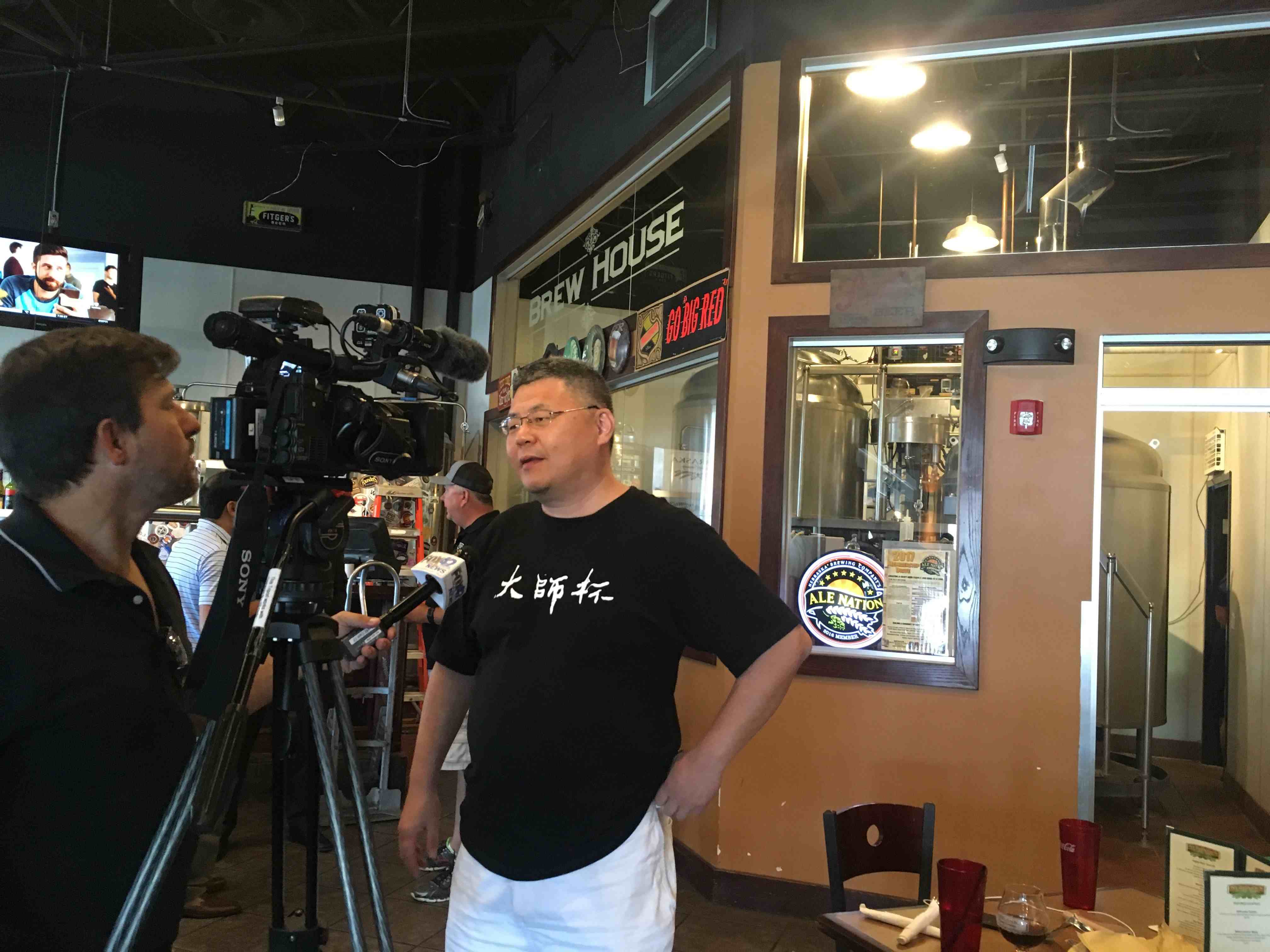
China
22:23, 21-Sep-2017
Can you name the world’s most popular beer?
Nick Yates

As seven million liters of lager are set to be drunk at Oktoberfest before it finishes next month, how many of the revelers at the world’s biggest beer festival in Munich will be aware that four of the 10 most popular beer brands globally are from the other side of the world – China?
None of Snow, Tsingtao, Yanjing or Harbin is available at Oktoberfest, and many people outside China will never have heard of these brands. But the four were among the most successful beers in 2016, according to a ranking by researchers Euromonitor.
The list is topped by Snow, a favorite of provincial Chinese farmers but a drink with barely any brand recognition elsewhere in the world.

Chinese brand Harbin is the world’s eighth most popular beer by volume sales. /Xinhua Photo
Chinese brand Harbin is the world’s eighth most popular beer by volume sales. /Xinhua Photo
China’s huge population of more than 1.3 billion translates to a lot of thirsty people, and the country is the world’s biggest beer market, a fact that major international players have capitalized on. Foreigners might be more familiar with the companies in charge of Snow, Tsingtao and Harbin.
Harbin is owned by Anheuser-Busch (AB) InBev, the Belgian-Brazilian behemoth that is the product of numerous mergers and now has its stamp on more drinks brands than you can shake a can of lager at. Budweiser, Corona, Stella Artois? They’re all AB InBev.
The company was the world’s biggest brewer even before its acquisition in October 2016 of SAB Miller, which majority-owned Snow at the time.
Competition regulators ordered that Snow be sold off, and it is now wholly in the hands of SAB Miller’s Chinese partner in the joint venture.
AB once owned a 27-percent share in Tsingtao, but sold it all off, mostly to Japan’s Asahi.
Of the four big Chinese brands, Yanjing is the only one that hasn’t been associated with any foreign companies. Perhaps this explains why it is reportedly the official beer served at state banquets in Beijing’s Great Hall of the People.

Microbreweries like the Master Gao Brewing Company have become more popular despite the big brands’ dominance. /Photo via Master Gao
Microbreweries like the Master Gao Brewing Company have become more popular despite the big brands’ dominance. /Photo via Master Gao
While beer sales are dominated by the big names, the market is changing and Budweiser, Stella Artois and Snow are not sitting as pretty on off-license shelves as they once were.
Beer sales are declining worldwide. The brands on the Euromonitor list recorded a combined sales total of 426.1 million hectoliters in 2016, down from 430 million 12 months earlier.
Tsingtao sold almost 10 percent less beer year-on-year in 2016. According to analysis by BMI Research, beer consumption in China is likely to continue a downward trend for the next five years, after falling for the past two.
At the same time, the growth of “craft” beer from small, independent breweries has been well reported. Great Leap Brewing was Beijing’s first such operation in 2010, but the Chinese capital now has a dozen of them, and they have popped up in many other cities.
Let’s not get carried away though – beer is likely to remain the everyman’s alcoholic drink for some time, and the average drinker from Europe to Asia will keep choosing the big brands and the pale, inoffensive lagers in which they specialize.

Yan Gao (right), head of the Master Gao Brewing Company in Nanjing, east China. /Photo via Master Gao
Yan Gao (right), head of the Master Gao Brewing Company in Nanjing, east China. /Photo via Master Gao
Yan Gao, head of the Master Gao Brewing Company in Nanjing, east China, said his company has been growing at 300 percent every year for the past few years, but “we would be happy with 1 percent of the market. It’s a niche product.”
And for anyone wondering what Snow or Harbin tastes like, microbrewer Yin Hai of N Beer in Beijing has the answer. “They’re the Chinese Bud.”

SITEMAP
Copyright © 2018 CGTN. Beijing ICP prepared NO.16065310-3
Copyright © 2018 CGTN. Beijing ICP prepared NO.16065310-3